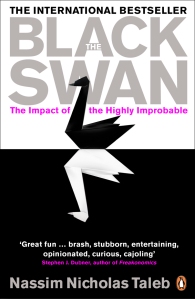“Least cost” is the term the power industry uses in defining what power plants or projects to prioritize. Conventional thought and the resulting software and techniques in the industry use this term to define the least cost of producing electricity. Given what we see today — the blackouts, the sharp rise in fuel prices — my view is that this two-dimensional and traditional method of calculating “least cost” is no longer valid today. This traditional approach has exacerbated the problems that we face in the Philippines today.
Almost all software used in energy planning has the same objective: optimize cost or find the least cost. Due to the advent of computers, planners use the Monte Carlo analyzes (the method of approximating probabilities of several outcomes) of thousands of scenarios to calculate “the least cost.” The scenarios include different seasons, rain fall intensity, temperature, transient faults and coal prices, among others.
There are software that run the above-mentioned scenarios and are available in the market. For example, QuantRisk uses Monte Carlo simulation for calibration, back-testing and execution of risk valuation in energy planning. This software considers all risk indicators that include market and counterparty exposure and credit risks. It can also compute for regulatory risks, but this is hardly applicable in the Philippines since there are no regulatory risks involved as the ERC bilateral rate structure is used for pricing.
Similarly, other software such as Promod and Plexos are also used for forecasting electricity market prices and analyzing market power, production costs and resource operations, and estimate both fuel requirements, as well as air emissions.
In general, these software, once broken down to the basics, use linear algebra in calculating for these numbers– a two-dimension calculation of scenarios and prices.
In energy planning, finding the least cost comes with ensuring the security of the system–making certain that the system does not collapse since there is a continuous power supply available for dispatch. This means that plants that can provide more stable energy supply and are more expensive to run, and plants that cost lower to run but cannot provide a stable source of power are included in the system So, the system will include different power plants that can “secure the system” regardless of the cost of running these plants.
The numbers that will ultimately come out using software for energy planning will show the hierarchy of prices or costs of the different power plants within the system. So, it is possible that a coal plant may show a price of say P5.00/kWh while a geothermal power plant may show, for example, P5.80/kWh. Conventional wisdom will then tell us that coal is cheaper than geothermal, right?
Not necessarily. We may be completely wrong.

Geothermal power plant. Geothermal or coal-fired power? Photo from http://www.iwnsvg.com
Remember my argument about comparing car prices? Each car represents a certain value proposition against a milieu of risks associated with the car. We cannot compare a Chery car against a Volvo as each will have its own characteristics distinctly different from each other and appealing to buyers in different ways. It will boil down to the personal choices of the buyers.
In the case of the coal versus geothermal example, we then ask whether a fluctuating P5.00/kWh coal-fired power price is really cheaper than a P5.80/kWh geothermal fixed price. Maybe for someone who is looking at a very short-term time frame, and then, the answer is YES. From a different time perspective, the geothermal fixed price may be more attractive since those who are looking for price stability and predictability, the geothermal price is definitely better than the coal one.
Generally, traditional power planning uses the least cost generation methodology where planners add stand-alone costs. The least cost generation method, however does not compute for the risks involved. The risks are identified and scenarios are calculated according to different scenarios, but the costs of these risks are not calculated into the equation. This is highly problematic. After all, talking about costs without talking about risks is like watching a musical movie without the sound!
A risk, which we never took seriously in the past, is Indonesia’s changing rules about exporting coal. A few years back, Indonesia suddenly decided that it will not allow the export of certain grades of coal. This led to a much higher cost for coal-fired power plant operators in the Philippines. One company started to bleed because its ERC-approved formula did not take into consideration the fundamental change in the base prices.
To look at a price without considering risks behind the price can lead us to a completely wrong decision.
In his book, The Black Swan, Nicholas Taleb speaks of events that are completely coming from the left field that conventional method or processes that try to manage risks are simply no longer adequate. “Sendong” for Cagayan de Oro was a “Black Swan” event. Nobody alive today would have thought that it would happen. And yet, it did.

Photo from
http://www.james-strocel.com
Calculating the “least cost” for the power sector, in particular, would then be a dangerous process in this age of “Black Swans.” In a paper he wrote in May 2004, the late Professor Shimon Awerbuch of the University of Sussex clearly stated: “Traditional electricity planning processes focus on finding the least-cost generating alternative. Given today’s dynamic and uncertain environment however it is impossible to correctly identify the 30-year ‘least cost’ option, assuming such an option exists.”
Energy planners should start looking at a portfolio of power plants and calculate the portfolio costs given the different levels of risk. To illustrate, we can compare 100% completely renewable energy system versus a 100% coal-based energy system. From an energy cost perspective, in general, one can say the cost for the 100% renewable energy system is fixed in the long-term. One cannot say the same thing for coal since prices fluctuate everyday. More so, coal is finite, at least depending on the cost to mine and the resulting global price. On the other hand, higher investments may be required for the renewable energy system compared to the coal-based one.
So which one will be preferred: a fixed price system with higher initial investments, or a fluctuating price with lower CAPEX upfront?
This is hard to say as this will depend on the capacity of the consuming public to take on these risks. Or, in fact, it depends on the individual preferences of the consuming public – some may want renewable energy for a completely different reason e.g. “I love the Earth” that does not come with any mathematical equation.
In Finance, concepts like Markowitz’s Portfolio Theory have been introduced half a century ago to explain how putting individual assets in a portfolio can attain a lower risk or a higher return compared to investing in just one asset. In other words, assets should not be bought on its own merits, but rather on how that asset behaves in a portfolio. In our example, we should not be comparing the renewable energy system versus the coal-based system. According to this theory, it will be make more sense to look at the costs and the risks of the two systems combined at different proportions.
This is how energy planning should be made: a portfolio approach, rather than a “least cost” approach. In the view of the late Prof. Awerbuch in the same paper cited above noted that “Energy planning represents an investment- decision problem and investors commonly apply portfolio theory to manage risk and maximize portfolio performance under a variety of unpredictable economic outcomes. Energy planning techniques need to focus less on trying to identify the least-cost alternative and more on developing optimal generating portfolios that minimize cost for given levels of risk.”
In my opinion, unless we abandon this “least-cost” approach, the Philippines will continue to face huge supply and price risks. Luzon and Visayas will soon suffer the same Mindanao power situation of continuous power interruptions, and this will continue to happen for as long as we insist on this “least-cost” approach. I agree with the late Prof. Awerbuch since given what we are experiencing today, we really need to re-think and maybe completely abandon traditional stand-alone kWh generating costs measures and go for portfolio planning.
We need a major overhaul in our energy planning, and we need it now.
I just like the helpful info you provide to your articles.
I will bookmark your weblog and test once more here regularly.
I am rather certain I will be informed many new stuff proper here!
Best of luck for the following!
LikeLike
Thank you. Sorry for the late response but I do hope I can write down my thoughts from time to time. Your comments will be helpful, of course.
LikeLike